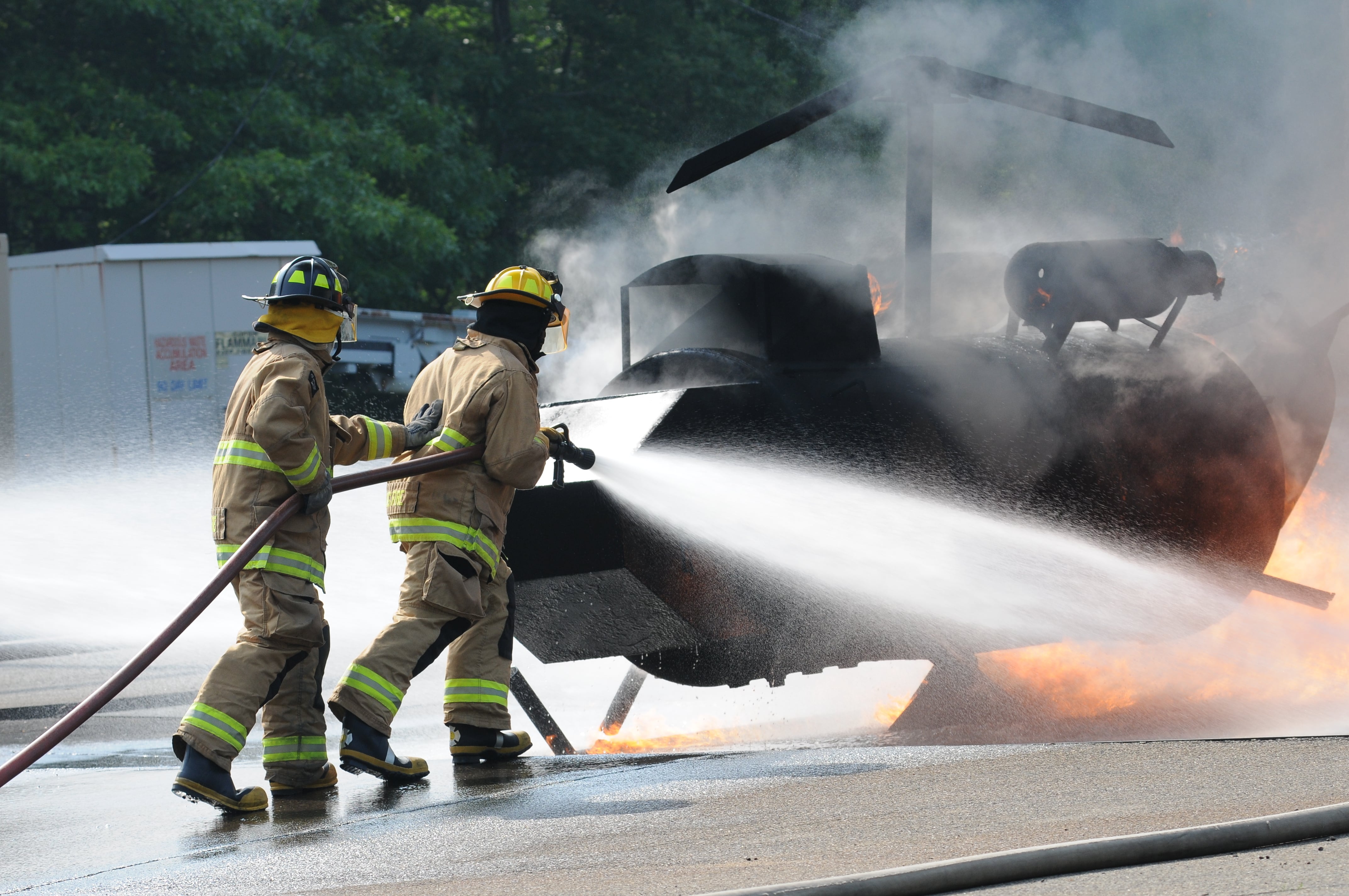House lawmakers would force military bases to stop using toxic firefighting foam in almost all training activities and ban them altogether over the next decade under legislation unveiled this week.
The measure, part of the House Armed Services Committee’s initial draft of the annual defense authorization bill, would also make available millions of dollars in environmental clean-up funding to National Guard bases, to address chemical contamination that can seep into groundwater and cause serious health concerns.
At issue are the use of cancer-causing perfluoroalky and polyfluoroalkyl substances ― more commonly known as PFAS ― that are found in the firefighting foam and over the years have found their way into water systems on military bases and surrounding communities.
RELATED

Last year, Pentagon officials for the first time released list of at least 126 military installations where it had found higher-than-recommended levels of the toxic chemicals in local water systems, prompting a host of mitigation efforts.
But many military families and nearby neighbors worry that years of exposure to the compounds may have already done serious, long-term damage, especially to children who regularly drank and consumed the contaminated water.
Under the plan proposed by the House panel, the firefighting foam could only be used in non-emergency situations where officials made efforts to contain all of the chemicals. That could include situations like simulated hangar fires, where all of the foam could be collected and stored safely after the event.
Lawmakers would allow the PFAS-laden foam to be used in emergency fire situations, but only until an alternative can be found. They direct Navy officials to identify “a fluorine-free fire fighting agent” by the start of 2025 and for the old foam to be completely eliminated from use by September 2029.
The moves go further than what the Senate Armed Services Committee included in their version of the annual defense budget policy bill. Their draft prohibits the Department of Defense from buying any foam which includes the toxic substances after September 2022, but does not include any prohibition on use of existing stocks.
The new funding rules for National Guard bases are designed to address what committee staff labeled gaps in current military rules regarding environmental cleanup around bases. Previously, Guard officials could not access that money, leading to challenges in stopping groundwater contamination.
On Monday, Food and Drug Administration officials announced that PFAS contamination have been found in “substantial” levels in a variety of foods and drinks. The chemicals are used in a wide range of products, including non-stick pans and food packaging.
RELATED

A federal study in 2018 found the compounds were more dangerous than previously thought, prompting agencies to revise downward estimates of safe exposure to the long-lasting compounds.
Last month, Military Times reported that a new database compiled by the Environmental Working Group and Northeastern University found more than 610 drinking water sources in 43 states with potentially unsafe levels of the chemicals.
The House Armed Services Committee is expected next week to vote on the proposals as part of the larger defense authorization bill. The draft will have to pass the full House and survive compromise negotiations with the Senate before heading to the White House to become law, a process that is expected to drag into the fall.
Leo covers Congress, Veterans Affairs and the White House for Military Times. He has covered Washington, D.C. since 2004, focusing on military personnel and veterans policies. His work has earned numerous honors, including a 2009 Polk award, a 2010 National Headliner Award, the IAVA Leadership in Journalism award and the VFW News Media award.





